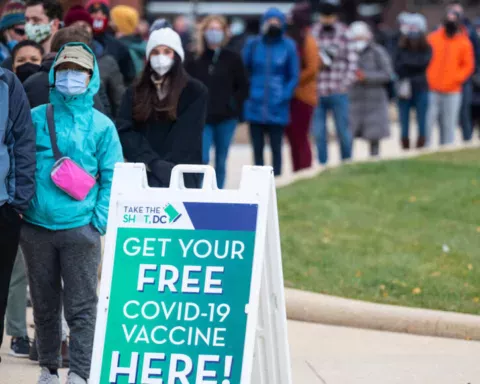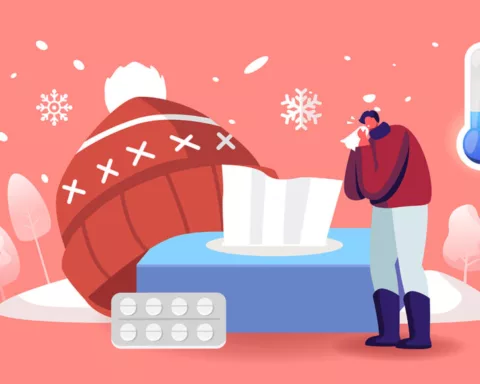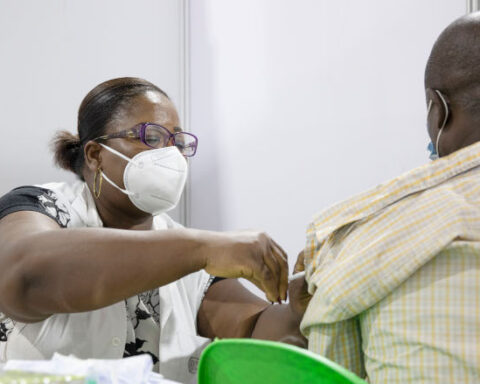You can get COVID-19 during your travels. You may feel well and not have any symptoms, but you can still spread COVID-19 to others. You and your travel companions (including children) may spread COVID-19 to other people including your family, friends, and community for 14 days after you were exposed to the virus.
Don’t travel if you are sick or if you have been around someone with COVID-19 in the past 14 days. Don’t travel with someone who is sick.
Wear Masks During Travel
CDC strongly recommends everyone wear a mask on public transportation.
This recommendation includes passengers and workers on airplanes, trains, ships, ferries, subways, taxis, and ride shares, and at transportation hubs such as airports and stations. Click here for more information.
Before You Travel
Before you travel, consider the following:
Is COVID-19 spreading at your destination?
The more cases at your destination, the more likely you are to get infected during travel and spread the virus to others when you return.
Check Each State’s Cases in the Last 7 Days
Travel Recommendations for Destinations Around the World
Do you live with someone who might be at increased risk for severe illness from COVID-19?
If you get infected while traveling, you can spread the virus to loved ones when you return, even if you don’t have symptoms.
Are you at increased risk for severe illness from COVID-19?
Anyone can get very ill from the virus that causes COVID-19, but older adults and people of any age with certain underlying medical conditions are at increased risk for severe illness from COVID-19.
Does your destination have requirements or restrictions for travelers?
Some state, local, and territorial governments have requirements, such as requiring people to wear masks and requiring those who recently traveled to stay home for up to 14 days.
Check state, territorial, tribal and local public health websites for information before you travel.
If you are traveling internationally, check the destination’s Office of Foreign Affairs or Ministry of Health or the US Department of State, Bureau of Consular Affairs, Country Information pageexternal icon for details about entry requirements and restrictions for arriving travelers, such as mandatory testing or quarantine.
Similarities and Differences between Flu and COVID-19
If You Travel
During your trip, take steps to protect yourself and others from COVID-19:
Wear a mask to keep your nose and mouth covered when in public settings, including on public transportation and in transportation hubs such as airports and stations.
Avoid close contact by staying at least 6 feet apart (about 2 arms’ length) from anyone who is not from your household.
Wash your hands often or use hand sanitizer (with at least 60% alcohol).
Avoid contact with anyone who is sick.
Avoid touching your eyes, nose, and mouth.
Traveling Abroad? Check CDC’s COVID-19 Travel Recommendations by Destination before planning your trip.
Considerations for Types of Travel
Travel increases your chances of getting and spreading COVID-19. Your chances of getting COVID-19 while traveling also depend on whether you and those around you take steps to protect yourself and others, such as wearing masks and staying 6 feet away from people outside your household (social distancing).
Airports, bus stations, train stations, and rest stops are all places travelers can be exposed to the virus in the air and on surfaces. These are also places where it can be hard to social distance. In general, the longer you are around a person with COVID-19, the more likely you are to get infected.
Air travel
Air travel requires spending time in security lines and airport terminals, which can bring you in close contact with other people and frequently touched surfaces. Most viruses and other germs do not spread easily on flights because of how air circulates and is filtered on airplanes. However, social distancing is difficult on crowded flights, and sitting within 6 feet of others, sometimes for hours, may increase your risk of getting COVID-19.
Also consider how you get to and from the airport, as public transportation and ridesharing can increase your chances of being exposed to the virus.
Bus or train travel
Traveling on buses and trains for any length of time can involve sitting or standing within 6 feet of others, which may increase your risk of getting COVID-19. If you choose to travel by bus or train, learn what you can do to protect yourself on public transportation.
Car travel
Making stops along the way for gas, food, or bathroom breaks can put you and your traveling companions in close contact with other people and frequently-touched surfaces.
RV travel
You may have to stop less often for food or bathroom breaks, but RV travel usually means staying at RV parks overnight and getting gas and supplies at other public places. These stops may put you and those with you in the RV in close contact with others.
Know When to Delay your Travel to Avoid Spreading COVID-19
People who are sick, have recently tested positive for the virus that causes COVID-19, or have been exposed to a person with COVID-19 should delay travel.
How Are Companies Protecting Customers from COVID-19?
When planning travel, you may want to check companies’ websites to see what they are doing to protect customers from COVID-19. Things to look for include:
- Requiring people to wear a mask
- Promoting social distancing
- Using online or contactless reservations and check-in
- Using contactless payment
- Enhanced cleaning procedures
Tips to avoid getting and spreading COVID-19 in common travel situations:
In public:
- Wear a mask in public settings, including on public transportation and in transportation hubs such as airports and stations.
- Stay at least 6 feet (about 2 arms’ length) from anyone who is not from your household.
Bathrooms and rest stops:
Wash your hands with soap and water for at least 20 seconds after using the bathroom and after you have been in a public place.
If soap and water are not available, use a hand sanitizer that contains at least 60% alcohol. Cover all surfaces of your hands and rub them together until they feel dry.
Getting gas:
Use disinfecting wipes on handles and buttons at the gas pumps before you touch them (if available).
After fueling, use a hand sanitizer with at least 60% alcohol. When you get to your destination, wash your hands with soap and water for at least 20 seconds.
Hotels and accommodations:
Food stops:
The safest option is to bring your own food. If you don’t bring your own food, use drive-through, delivery, take-out, and curb-side pick-up options.
Anticipate Your Travel Needs
Bring a mask to wear in public places and on public transportation.
Pack hand sanitizer with at least 60% alcohol. Keep this within reach.
Bring enough of your medicine to last you for the entire trip.
Pack food and water in case restaurants and stores are closed, or if drive-through, take-out, and outdoor-dining options aren’t available.
If you are considering cleaning your travel lodgings, see CDC’s guidance on how to clean and disinfect.
Check Travel Restrictions
State, local, and territorial governments may have travel restrictions in place, including testing requirements, stay-at-home orders, and quarantine requirements upon arrival. Follow state, local, and territorial travel restrictions.
For up-to-date information and travel guidance, check the state, territorial, tribal and local health department where you are, along your route, and where you are going. Prepare to be flexible during your trip as restrictions and policies may change during your travel.
If traveling internationally or across international borders, check with the destination’s Office of Foreign Affairs or Ministry of Health or the US Department of State, Bureau of Consular Affairs, Country Information pageexternal icon for details about entry requirements and restrictions for arriving travelers, such as mandatory testing or quarantine.
Local policies at your destination may require you to be tested for COVID-19 before you are allowed to enter the country. If you test positive on arrival, you may be required to isolate for a period of time. You may even be prevented from returning to the United States, as scheduled.
After You Travel
You may have been exposed to COVID-19 on your travels. You may feel well and not have any symptoms, but you can be contagious without symptoms and spread the virus to others.
You and your travel companions (including children) pose a risk to your family, friends, and community for 14 days after you were exposed to the virus. Regardless of where you traveled or what you did during your trip, take these actions to protect others from getting sick after you return:
When around others, stay at least 6 feet (about 2 arms’ length) from other people who are not from your household. It is important to do this everywhere, both indoors and outdoors.
Steps to help prevent the spread of COVID-19 if you are sick
Wear a mask to keep your nose and mouth covered when you are outside of your home.
Wash your hands often or use hand sanitizer (with at least 60% alcohol).
Watch your health and look for symptoms of COVID-19. Take your temperature if you feel sick.
Follow state, territorial, tribal and local recommendations or requirements after travel.
Higher Risk Activities
Some types of travel and activities can put you at higher risk for exposure to COVID-19 (see list below). If you participated in higher risk activities or think that you may have been exposed before or during your trip, take extra precautions (in addition the ones listed above) to protect others for 14 days after you arrive:
Stay home as much as possible.
Avoid being around people at increased risk for severe illness from COVID-19.
Consider getting tested for COVID-19.
What activities are considered higher risk?
Here are examples of activities and situations that can increase your risk of exposure to COVID-19:
Being in an area that is experiencing high levels of COVID-19, including destinations with a Level 3 Travel Health Notice.
You can check the Travel Health Notices for recommendations for places you have traveled, including foreign countries and U.S. territories. You can also check states, counties, and cities to determine if these areas are experiencing high levels of COVID-19.
Going to a large social gathering like a wedding, funeral, or party.
Attending a mass gathering like a sporting event, concert, or parade.
Being in crowds — for example, in restaurants, bars, airports, bus and train stations, or movie theaters.
Traveling on a cruise ship or river boat.
If you know that you were exposed to someone with COVID-19, postpone further travel.
If you get any symptoms of COVID-19, see What to Do If You Are Sick.






